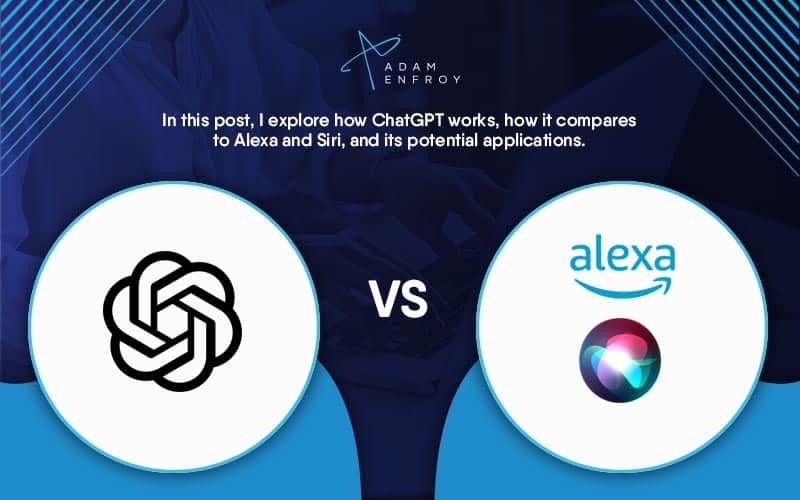What Is a GPT 3 Chatbot?
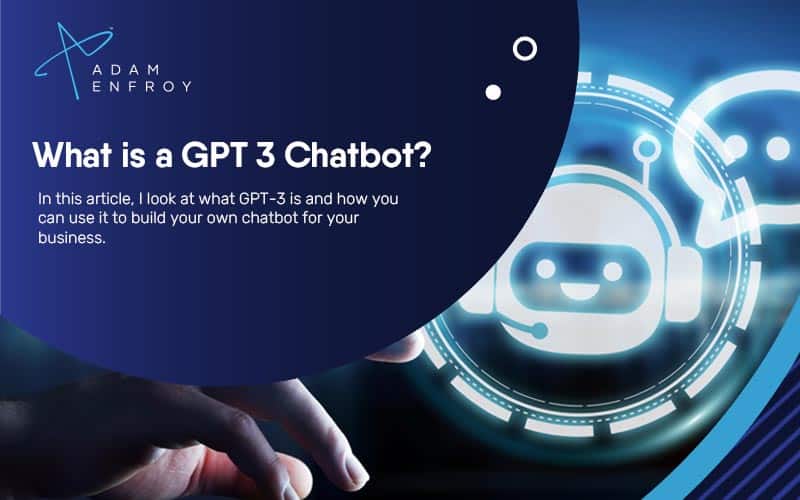
AI chatbots have recently taken the customer service and sales world by storm.
As Artificial intelligence (AI) and natural language processing (NLP) become more in line with human needs, they can understand the user’s intent and, as a result, respond accordingly.
While live chat software has been around for years, chatbots allow you to take things to the next level since the AI behind chatbots is constantly learning and evolving.
In this article, I’ll look at what GPT-3 is and how you can use it to build business chatbots that can generate the perfect response when dealing with customers.
How Does A GPT-3 Chatbot Work?
When combining GPT-3 Chatbots and Customer Service, one can feed various examples of private messages and conversations into the AI, which will then learn how to respond to prompts over time.
With an ever-increasing number of training data and fine-tuning techniques, the AI model can better approximate human conversation with every iteration.
GPT-3 powered chatbots work at a high level by taking in user input, processing it through an AI model, and then outputting a response.
They repeat the process until the conversation ends.
How Do GPT-3 Chatbots Impact Customer Service?
Here are the various ways an AI assistant taking care of your customer service can benefit you.
Chatbots Can Speed Up The Process Of Conversing With The Customer
Having all the dependencies in an app that takes care of customer service can speed up the process by conversing with clients and understanding what they need – without human intervention.
Chatbots Can Proactively Offer Suggestions And Next Steps
Since one can put customer questions into a large language model, this will eventually allow the chatbot to generate suggestions and the subsequent action steps to take – all depending on the situation.
These action items can be proactively offered to customers rather than waiting for them to ask.
It benefits everyone involved as it can speed up the customer service process.
Chatbots Can Take On Simple Tasks That Would Typically Require A Human Agent
With a better understanding of customer needs, GPT-3 chatbots can take on simple tasks that require a human agent.
The bots then free up human resources and deal with more complex inquiries.
Chatbots Can Provide 24/7 Availability
Following command patterns and natural language processing, GPT-3 chatbots can provide customers with 24/7 availability.
Whether you’re building a simple chatbot or a more complex one, your customer service will be available as soon as a customer needs it – no need for them to wait for the next customer agent to start working.
Chatbots Can Handle Multiple Conversations At Once
With GPT-3 chatbots generating output text at a rate much faster than human conversation, they can handle multiple chats at once.
Conversations through multiple GPT-3 chatbots benefit the business in question, as they can close open requests much faster than any human can.
Chatbots Never Get Tired Or Need A Break
No person can provide customer service for an extended period without getting tired.
However, because the basis of GPT-3 chatbots is code, they can handle a higher volume of inquiries, consistently providing the same level of service no matter how long they’ve been at it.
These shorter wait times when responding to questions lead to happier customers.
Chatbots Can Offer A More Personal Touch
Human chat agents often have difficulty keeping track of all the details during multiple conversations.
GPT-3 chatbots, on the other hand, can keep track of all the details and offer a more personal touch by addressing customers by name and using custom scripts that best fit a particular situation.
They can also reference data from previous interactions (no matter how long ago) on the fly, providing a finely-tuned experience.
What Makes GPT-3 Chatbots Work?
The following are some components that make GPT-3 chatbots work.
Natural Language Understanding
Deep learning can happen through natural language understanding (NLU), where the chatbot understands the customer’s needs.
In addition, chatbots use NLP (natural language processing) to understand the customer’s questions correctly.
With various possible language patterns customers might use to ask their questions, this is a fundamental aspect of having AI chatbots that work.
It also allows the chatbot to provide more accurate responses.
Dialog Management
An AI chatbot needs to respond in real-time to customer queries.
That’s where dialog management comes in and includes sending and receiving messages quickly while keeping track of the conversation flow.
Language Models
The GPT-3 API provides several different language models that chatbots can use.
For example, Davinci is one of the most capable models OpenAI has released, while Ada is the fastest-responding model.
These can understand the customer’s needs and provide the correct response.
Knowledge Representation
Whether for social media or customer service, GPT-3 chatbots need to be able to access the correct data when responding, and that’s where knowledge representation comes in.
Knowledge representation is accessing information in a format that computers can understand, such as various data representing facts, rules, and relationships.
Machine Learning
As time goes by, AI models will become more and more accurate partly due to a machine learning model responsible for learning from past conversations and improving the accuracy of future responses.
Language Processing
Artificial intelligence also needs to understand human language to provide accurate responses.
Language processing is the process of understanding and converting human language into a format that computers can understand.
Such tasks include tokenization, lemmatization, and parsing.
Tokenization is the process of breaking up a sentence into individual words.
Lemmatization is the process of reducing a word to its base form.
Parsing is the process of analyzing a sentence to understand its meaning.
These two allow the chatbot to understand the user’s input and respond accordingly.
Few-Shot Learning
Few-shot learning refers to the ability of an AI model to learn from just a few examples.
As such, GPT-3 chatbots can learn from several conversations and improve based on patterns.
Few-shot learning also allows chatbots to understand patterns and develop their outputs based on them rather than training from millions of variations.
Neural Networks
AI systems also need to handle a large amount of data.
Since not all this data will be helpful, chatbots use neural networks to process it and extract useful information.
The information is then used to improve the accuracy of the output chatbots generate.
Building a GPT-3 Chatbot
Here are the steps that anyone building a GPT-3 chatbot needs to follow.
Find A Dataset
A dataset is a data collection used to train a machine learning model.
There are many different datasets available online.
One popular dataset is the OpenAI GPT-3 dataset.
It contains many sentences and paragraphs that humans have generated.
You can use Python as the most common programming language to train your model using the OpenAI GPT-3 dataset.
Preprocess The Data
Next, one can feed the algorithm with a GPT-3 model pre-trained on many human-generated sentences and paragraphs.
With a GPT-3 model that has been pre-trained, you can save time on training your model.
Train Your Model
While pre-training with data helps, developers must train finely tuned artificial intelligence systems on data before one can use them.
Here, the AI system learns to perform multiple tasks as part of the training process.
For example, if you want your own chatbots to be able to generate responses to customer queries, you will need to train it on a dataset of customer queries.
Once developers have trained the AI system, people can use them to generate responses to new queries.
Test Your Model
Whether using an open-source code found on GitHub or building your chatbot from scratch, testing this model before using it in a production environment is essential.
Testing lets you see how your chatbot performs on data it has never seen before, which helps to ensure that you can use your chatbot for general purposes and provide accurate responses.
Going Live
Finally, you can experience conversational AI from your chatbot by going live.
Going live allows customers to interact with your chatbot in real time.
It’s the best way to see your chatbot’s performance in a realistic setting.
Continuous Learning
Getting better text generation from your chatbot requires continuous learning.
It will help if you keep feeding your chatbot new data so that it can learn and improve its performance.
One way to do this is to use updated datasets to reflect current times.
You can also use a private dataset you created to complete the job.
Either way, it’s essential to keep feeding your chatbot new data to continue the learning process.
Well-known GPT-3 AI Chatbots And Possible Flaws
With Project December being one of the more commonly known hyper-realistic chatbots, it’s essential to understand that GPT-3 is not without its flaws.
The training data used to teach these chatbots can be very biased.
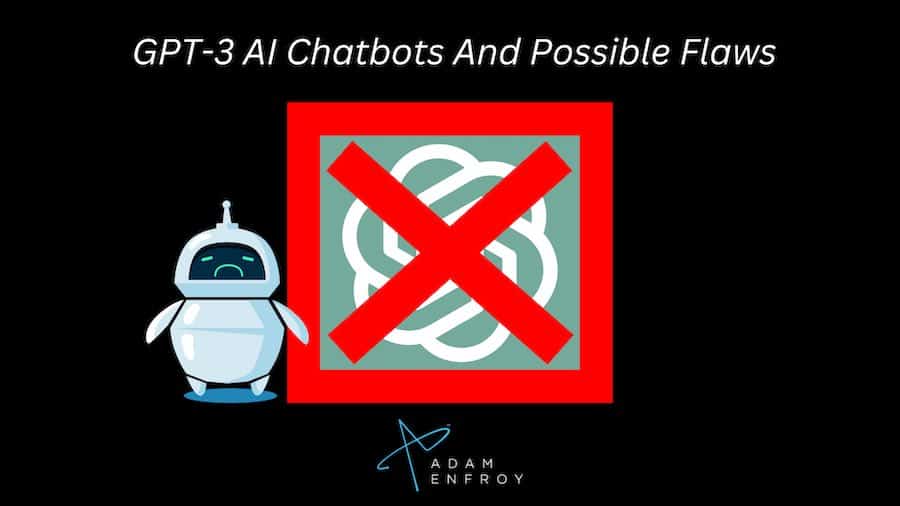
For example, if the training data is predominantly male, the chatbot will likely be biased towards males in the generated outputs.
It can result in some bizarre and sometimes inappropriate responses.
Another issue is that GPT-3 chatbots often have difficulty understanding context.
Such a difficulty can lead to the chatbot saying things that don’t make sense in the current conversation.
Since customers asking for support might be having the most private conversation with someone they believe can help their situation, being aware of this is critical.
Awareness of these issues and the desire to adjust the chatbot as needed is essential for anyone considering a GPT-3 tool.
There are also issues of data privacy that you need to consider.
Despite these flaws, GPT-3 chatbots are still very impressive and have a lot of potential.
Other Tools GPT3 Developers Can Create
OpenAI and GPT3 can create various projects, some of which I discuss below.
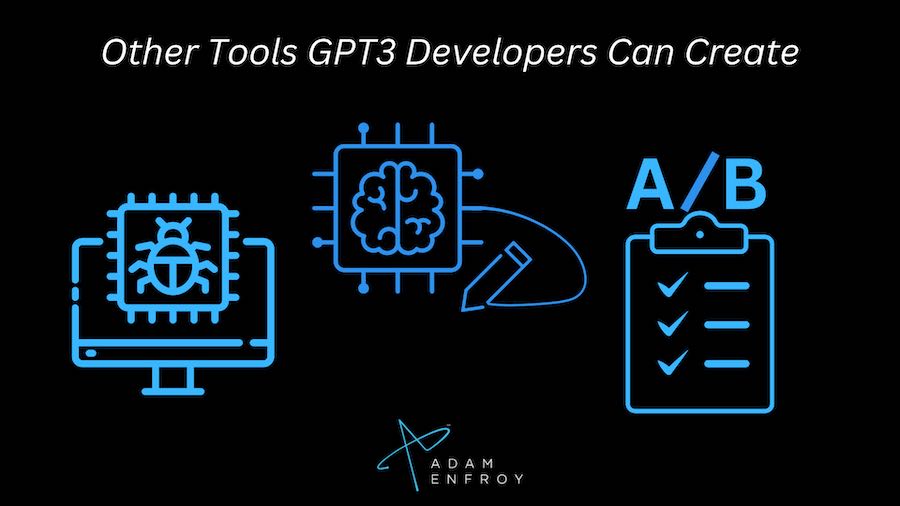
By requiring an OpenAI API key, companies can access the different models created by this company.
Ad Generation
GPT-3 can help you create better ads, from copywriting a sales page’s headlines and bullet points to designing ad campaigns.
One of the ways to make money with ChatGPT (an application that runs on GPT-3) is to create ads.
A/B Testing
One can also use GPT-3 for A/B testing.
With A/B testing, you can test different product versions to see the most effective.
Testing different product versions can improve your product’s design or test different marketing strategies.
Bug Detection
One can also use GPT-3 to detect bugs in software as part of code review tools.
Traditionally, finding software bugs was tedious and time-consuming, especially as software programs got more complex.
However, with GPT-3, you can automate this process and make it more efficient.
It saves time and effort, which is why AI is useful in this case.
Computer Vision
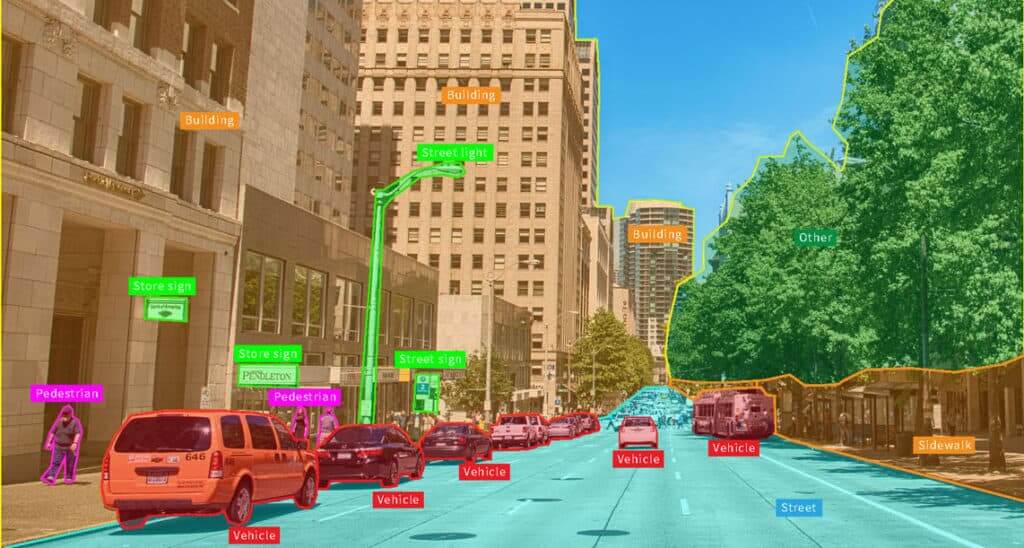
Image credit: https://appen.com/
Computer vision refers to the ability of computers to understand and interpret images.
Companies can use this for things like facial recognition or object recognition.
With GPT-3, you can train your computer to understand and interpret images better, which is useful when working with large datasets on big projects.
Book Writing
If you have an idea for a book but don’t want to write it word by word, you can use GPT-3 to generate the outline, introduction, part of the content, or the entire content itself.
It can save you a lot of time and allow you to focus on other things that can act as more extensive leverage when promoting and marketing your book.
Code Refactoring
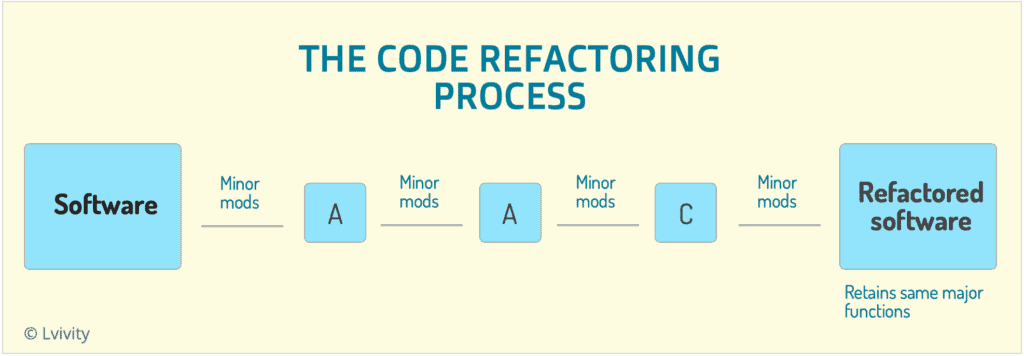
Image credit: https://lvivity.com
Refactoring is the process of restructuring code without changing its functionality.
As you can imagine, GPT-3 can also perform such operations.
Developers can use this to make code more readable or easier to maintain, saving them time and improving their code’s quality.
AI Writing Assistants
You can use GPT-3 to create AI writing software assistants.
These assistants can help you with grammar, spelling, and style.
They can also help you with the overall structure of your writing, so even if you’re not a great writer, you can still produce high-quality content with the help of these assistants.
GPT 3 vs. GPT 4 Chatbot
The artificial intelligence advancements in language models have been revolutionary, and the latest GPT-4 model with 100 trillion parameters sets a new milestone in performance.
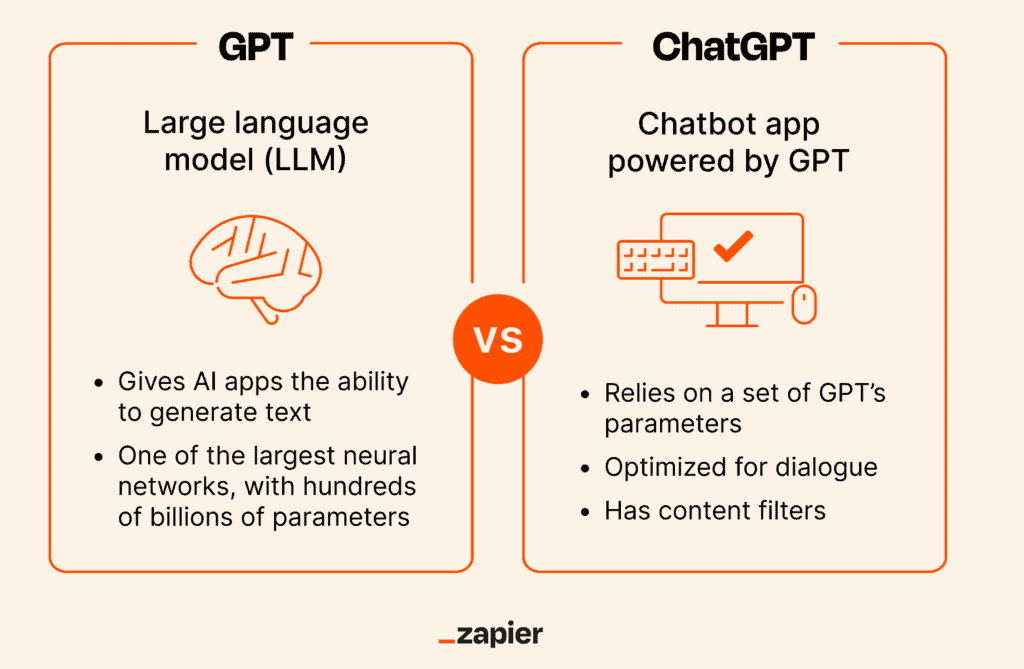
Image credit: https://zapier.com/
GPT-4 has double the capacity of GPT-3, which means it can analyze more data, learn more insights, and generate more accurate responses.
GPT-4 can store more detailed information and recognize patterns more effectively than GPT-3.
Moreover, GPT-4 has improved solid performance and can generate more balanced and accurate answers, making it more reliable for businesses and individuals.
GPT-4 has enhanced steerability, making it possible to guide what it produces accurately.
With GPT-4, users can generate customized, biased, or specific content, unlike GPT-3.
For example, if a user implemented a chatbot on a website, they could guide the chatbot’s responses, making it more reliable and suitable for specific customer needs.
Such a feature makes GPT-4 more flexible to use than GPT-3.
GPT-4 now includes image inputs, giving it even more versatility.
The new language model can generate written responses based on visual inputs, including text descriptions of images.
With this feature, you can use GPT-4 for tasks such as image captioning, text-to-image synthesis, and image-based question-answering.
Such an addition extends the model’s competency into multi-modality generation, making it valuable in industries that depend on text and visual data.
GPT-4 accomplished human-level performance on many professional and academic benchmarks, including the Uniform Bar Examination, LSAT, and SAT, according to a report by OpenAI.
It outperformed other large language models on traditional machine learning benchmarks, multiple choice questions, commonsense reasoning, and grade-school data science questions.
All these benchmarks confirm that GPT-4 is another significant leap in the progress of AI-enabled technology.
Wrap Up.
In conclusion, GPT-3 is a powerful tool that businesses can use for various purposes.
Chatbots are a prominent use case for GPT-3, allowing companies to build a new app for their customer service needs quickly.
Compared to traditional chatbots, their GPT-3 counterparts offer a more realistic conversation when dealing with customers, improving customer service ratings.
What do you think about the GPT-3 chatbot?
Does it have a place in customer service?
Or are there better ways to use the tool?
Let me know in the comments below.
Further reading on AdamEnfroy.com: AI marketing and AI sales software are two other ideal use cases for GPT-3.
Finally, if you’re excited by what GPT-3 offers, GPT-4 is the new model OpenAI should release soon.


